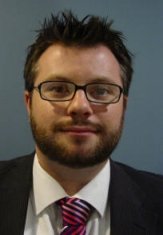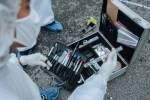Forensic Odontology
The British-Association for Forensic-Odontology (BAFO) notes that forensic odontology is a branch of forensic medicine which in the interests of justice deals with the proper examination, handling and presentation of dental evidence in a court of law.
Forensic dentists (odontologists) examine the development, anatomy and any restorative dental corrections of the teeth, such as fillings, to make a comparative identification of a person. Teeth are one the most durable parts of the human body and may be the only recognizable remains in cases of decomposition, fire scenes or mass fatalities, and can be used to identify an individual in such cases. For example, when law enforcement officials find unidentified human remains such as teeth, this critical piece of evidence may be the only resource investigators can use to compare to dental records of known missing persons to determine the person's identity. (National Institute of Justice)
The BAFO states that the work of a forensic odontologist includes:
- Identification of unknown human remains through dental records.
- Assisting at the scene of a mass disaster.
- Age estimations of both living and deceased persons.
- Analysis of bite marks found on victims of attack.
- ID of bitemarks in other substances e.g. wood, leather and foodstuffs.
- Analysis of weapon marks using the principles of bite mark analysis.
- Presentation of bite and weapon mark evidence in court.
- Building a picture of lifestyle and diet at an archaeological site.
Want To Study Forensics/CSI?
The Forensic Odontologist
Dr Richard Bassed discusses his work as a forensic odontologist.
Expert Q & A
Forensic odontology expert, Dr Iain Pretty is Professor of Public Health Dentistry at the University of Manchester, School of Dentistry. The author of over 100 articles in leading journals, Dr Pretty's research interests include the evidence base supporting the use of bitemark analyses in court proceedings. You can access a fascinating interview with Dr. Pretty via the following link.
Q & A With Forensic Odontology Expert Dr. Iain Pretty
Essential Reading
This book provides an introduction to the subject for the general dental practitioner who has an interest in forensic dentistry and is contemplating practicing in the field. It will also be useful as a reference during practice.
After a brief introduction, the book covers dental anatomy and development, expert witness skills, mortuary practice, dental human identification, disaster victim identification, dental age assessment, bite marks, forensic photography, and the role of the forensic odontologist in protection of the vulnerable person. Chapters outline accepted and recommended practices and refer to particular methodologies, presenting different schools of thought objectively.
The book will be invaluable for those needing an introduction to the subject that has been written by a team of experts in their respective fields who understand the needs of the forensic odontologist and, most important, how these fields interact in practice.
See following link for full details.
Forensic Odontology: An Essential Guide
Recent Articles
-
All About Forensic Science
Nov 12, 24 03:05 AM
A forensic science website designed to help anybody looking for detailed information and resources. -
The Role of Forensic Evidence in Criminal Defense Cases
Sep 05, 24 03:38 AM
Article exploring five key roles that forensic evidence plays in criminal defense cases -
The Evolving Role of Medical Science in Forensic Investigations
Aug 06, 24 03:35 AM
Insightful article exploring the critical role of medical science in forensic investigations.



New! Comments
Have your say about what you just read! Leave me a comment in the box below.